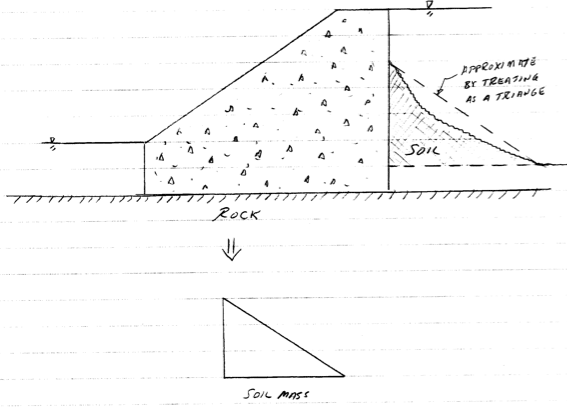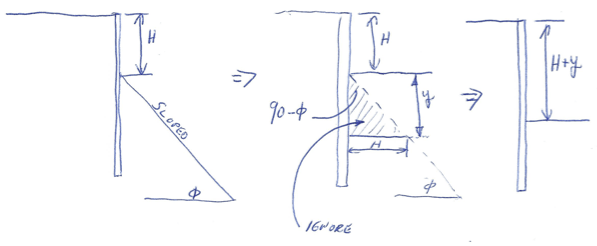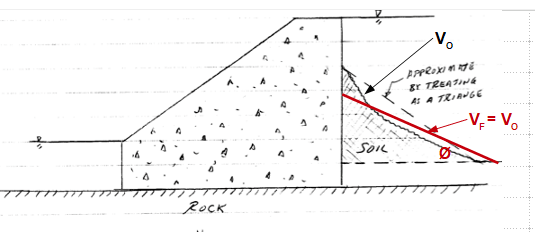Guest090822
Structural
- Jan 18, 2017
- 260
Does anyone know of any guidance on how to treat a "triangular" soil mass that is resting on a vertical wall?
The following is a simplified version of my problem:

The initial analysis is assuming that there is sediment build-up to within 2' of the wall and they treated it as level backfill with an infinite distance.
However, the soil build-up is actually sloped down and away from the vertical wall.
Does anyone know of a good approach on how to determine the lateral force exerted from a triangular soil mass that has known dimensions?
There was really good thread a long time ago (10 years +) where I encountered something similar and a few geotechnical guys had a simple rule of thumb that I can't recall, or find the thread!
Thanks in advance,
Rick
The following is a simplified version of my problem:

The initial analysis is assuming that there is sediment build-up to within 2' of the wall and they treated it as level backfill with an infinite distance.
However, the soil build-up is actually sloped down and away from the vertical wall.
Does anyone know of a good approach on how to determine the lateral force exerted from a triangular soil mass that has known dimensions?
There was really good thread a long time ago (10 years +) where I encountered something similar and a few geotechnical guys had a simple rule of thumb that I can't recall, or find the thread!
Thanks in advance,
Rick


